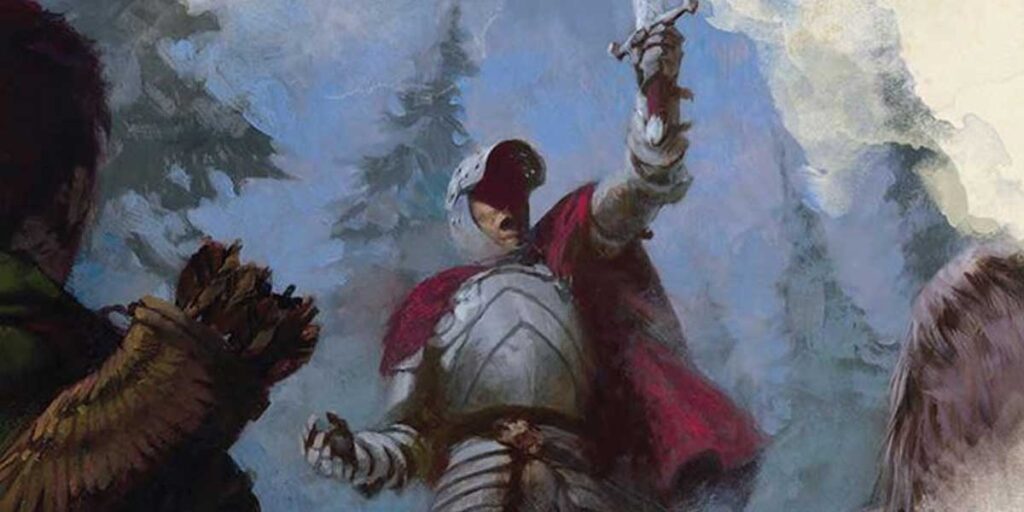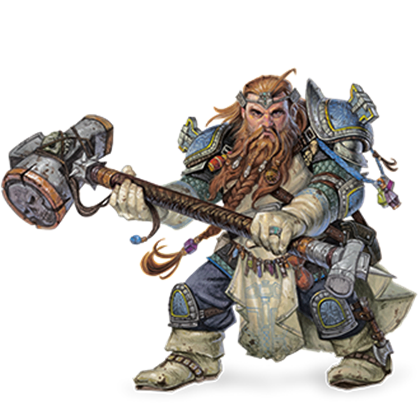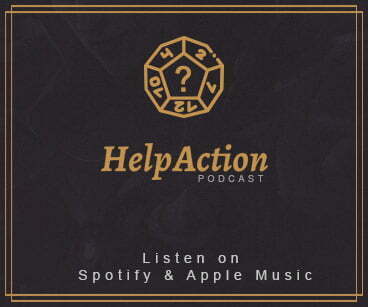Over the last few months, we’ve got our first look at the major changes intended for the next edition of Dungeons and Dragons and it has received various mixed opinions. One D&D plans to reshape 5th edition into the ultimate version of D&D which will supposedly be the final edition. Wizards of the Coast says it will be fully backward compatible with 5th edition, but with huge changes to the fundamentals of the game, it seems like that will be a pain in the ass. We’ve seen them change up where your ability scores come from, and how backgrounds work, and they’ve rewritten several feats and spells. Some of these changes are pretty good, but many of them are the exact opposite, terrible. Hopefully, this new document brings us more of those good changes.
For a while now, the term “race” has been a topic of heated debate among the TTRPG community. Not just D&D, but other gaming franchises have also looked at moving away from using the term due to many real-world social issues. The Unearthed Arcana playtest released December 1st, 2022 introduces WotC’s plan for addressing this issue moving forward. Let’s take a look at what they’ve got in store for us.

Table of Contents
What’s In It?
Though this new document introduces the use of species instead of races, this material in no way focuses on just that, which let’s be honest, is pretty disappointing. Instead, it focuses on three main points, the new way they intend to use species, the cleric class, and more rule changes. This review will be split up into three parts to make it more digestible, keep an eye out for the Species and Rules Glossary reviews after this one! They also introduce some new Epic Boons, but there are only a few of them, so I’ll be rolling those into this article. In each review, I will dive into the new content to discuss everything different from the 5th edition rules set as well as any changes they may have made since previous One D&D releases.
Cleric Class
Clerics are still divine spellcasters that draw upon their powers from a deity or pantheon, but this class is facing some major changes in these new rules. I won’t be going over all of the minute details as a lot of stuff is still the same, but here I’ll focus on everything that has changed from its original form.
Class Group: Priest
Primary Ability: Wisdom
Creating a Cleric
This section is the one that details your hit points, proficiencies, armor training, and equipment. When compared to the Cleric class in the Player’s Handbook, this version’s hit dice, hit points, as well as saving throw, tool and weapon proficiencies, and multiclassing requirements are all the same. Below are the details of this section that have changed.
Skills: Persuasion, Religion (or choose two from History, Insight, Medicine, Persuasion, and Religion)
- If you decide to choose your skill proficiencies, you still get to choose from the same list of options. What is new here is that they are providing Persuasion and Religion as suggestions for the two skills you should select. They’re now providing suggestions for you any time you are given the option to choose something.
Armor Training: Light armor, medium armor, shields
- Armor Training is the new term used to define what kinds of armor a character can don.
Starting Equipment:
As a 1st-level character, you start with the following equipment, or you can forgo it and spend 110 GP on equipment of your choice.
Chain shirt, holy symbol, mace, priest’s pack, shield, and 7 GP
- The main difference with starting equipment in the One D&D rules is that you no longer get to make any choices for your starting equipment unless you choose to buy all of your gear.
- They’ve also decided to switch up what kind of armor clerics start with. They used to get to choose between leather armor, scale mail, or chain mail if they were proficient, but now they get a chain shirt.
- The final change is that clerics no longer get to start with a crossbow or a second simple weapon.
Cleric Class Features
We see a major change to the Cleric class right from the start as they no longer get to choose their subclass at 1st Level. This also means that clerics don’t get their Domain Spells feature until then.
1st Level: Channel Divinity
You gain the ability to channel divine energy directly from the Outer Planes, using that energy to fuel magical effects. You start with two such effects: Divine Spark and Turn Undead, each of which is described below. Each time you use your Channel Divinity, you choose which effect to create, and you gain additional effect options at higher levels in this Class.
You can use your Channel Divinity a number of times equal to your proficiency bonus, and you regain all expended uses when you finish a long rest.
Some Channel Divinity effects require saving throws. When you use such an effect from this class, the DC equals the spell save DC from this class’s Spellcasting feature.
Divine Spark. As a Magic Action, you point your holy symbol at another creature you can see within 30 feet of yourself and focus divine energy at them. Roll a number of d8s equal to your proficiency bonus and add the rolls together. You either restore hit points to the creature equal to that total or force the creature to make a Constitution saving throw. On a failed save, the creature takes radiant damage equal to the total, and on a successful save, the creature takes half as much damage (rounded down).
Turn Undead. As a Magic Action, you present your holy symbol and speak a prayer censuring undead creatures. Each undead within 30 feet of you must make a Wisdom saving throw. If the creature fails its saving throw, it is Dazed for 1 minute or until it takes any damage or you are Incapacitated or die. While Dazed in this way, the only action the creature can take is the dash action, and if it moves, it must end that move farther from you than where it started.
- There is another big change at 1st level with the addition of a second Channel Divinity effect which normally isn’t gained until 2nd level and was connected to your subclass. This new option, Divine Spark, which is available to all clerics, allows you to either heal an ally or hurl radiant damage at an enemy.
- Turn Undead works the same for the most part, but introduces a new condition, Dazed. The full details for this new condition can be found in the Rules Glossary review coming soon. This new condition is used to simplify the wording of this feature, but this new wording leaves out a few things:
- With this new wording it doesn’t force any of the creatures to move away from you. The only action they can use is Dash, but they aren’t being forced to use it, or to move, so a creature that is right next to someone can decide to just stand still if they wish.
- This version also doesn’t state that the undead can’t move closer to you. It reads “and if it moves, it must end that move farther from you than where it started”. This doesn’t stop them from running past you as long as they stop at a distance further than they started from you. It also doesn’t prevent them from just moving one space away from you and stopping there.
- It is also missing the part that allows undead to try to escape from an effect that prevents it from moving. With the addition of the Dazed condition, this doesn’t seem like as much of an issue as it removes their ability to be able to attack while they’re affected by it.
- Channel Divinity also gets quite an upgrade by allowing you to use it a number of times per day equal to your proficiency bonus instead of gaining more uses at pre-determined levels.
1st Level: Spellcasting
Wisdom is still the spellcasting ability for clerics and they still use a holy symbol as a spellcasting focus. Below are the rest of the spellcasting details in full as they are making pretty big changes to how spells are prepared and how many spell slots you get.
Prepared Spells. You have the following spells prepared: Cure Wounds, Sacred Flame, Shield of Faith, Spare the Dying, and Thaumaturgy. Alternatively, you can prepare three 0-level spells (also known as cantrips) and two 1st-level Spells of your choice. Any spell you prepare for this class must be a divine spell.
Whenever you finish a long rest, you can pray or meditate and replace any spell you have prepared for this class with another divine spell of the same level.
At higher levels in this class, you can prepare more spells, as shown on the cleric table. The numbers there determine the number of different spells you can prepare of each level. For example, as a 4th-level Cleric, you can prepare four different 0-level spells, four different 1st-level spells, and three different 2nd-level spells.
Consult the “Prepared Cleric Spells” section for recommendations on which spells to prepare at higher levels.
Spell Slots. The cleric table shows how many spell slots you have at each level to cast your cleric spells of 1st level and higher; the number of different spells you can prepare of each level equals the number of spell slots you have at that level. For example, as a 5th-level cleric, you have four 1st-level spell slots, three 2nd-level spell slots, and two 3rd-level spell slots.
- They start with their list of suggested spells for a 1st-level character and instead of having a class-specific list of spells, clerics must now prepare spells from the Divine spell list and are limited to specific schools of magic.
- The new spellcasting tables in each class now display how many spells you can have prepared at each level instead of you knowing several spells and deciding how many for each level you want to prepare.
- The new spellcasting tables in each class also still determine how many spell slots you have available. The number of spells you can prepare for a level = how many spell slots you have for that level.
- Also, as I noted for the Bard class in my review One D&D Expert Classes: Classes and Subclasses, this is another class that has lost the Ritual Casting feature. This brings up the question, will they be limiting that feature to even fewer classes, or are they ditching the feature altogether?
2nd Level: Holy Order
You have dedicated yourself to one of the following sacred roles, either on your own or as part of a religious order. Choose one of the following options:
Protector. Trained for battle, you gain martial weapon proficiency and heavy armor training.
Scholar. Studying and teaching about the lore of the gods and the multiverse, you gain proficiency in two of the following skills of your choice: Arcana, History, Nature, Persuasion, and Religion. Whenever you make an ability check using either skill, you gain a bonus to the check equal to your Wisdom modifier.
Thaumaturge. Delving deeper into your divine magical abilities, you can prepare one extra 0-level spell from the Divine spell list. See your Spellcasting feature for more information on preparing spells. In addition, you regain one expended use of your Channel Divinity whenever you finish a short rest.
- This is a completely brand-new feature for the Cleric class.
3rd Level: Cleric Subclass
Clerics now choose their subclass at 3rd level instead of 1st level. With what we saw from the Expert Classes UA, this pretty much confirms that WotC plans on restructuring all classes so that each of them gains their subclass at the same time.
4th Level: Feat
- You still gain an Ability Score Improvement or another feat at the same levels a cleric normally would.
5th Level: Smite Undead
You can cause your Turn Undead feature to smite the undying; whenever you use Turn
Undead, you can roll a number of d8s equal to your proficiency bonus and add the rolls together. Each undead that fails its saving throw against that use of Turn Undead takes radiant damage equal to the roll’s total.
- This is a new feature that is replacing the Destroy Undead feature. Instead of being able to instantly destroy low CR undead creatures, you gain the ability to expend an extra use of your Turn Undead feature to channel radiant damage into any of your targets that fail their saving throw.
- The Destroy Undead feature doesn’t reappear anywhere in this version of the Cleric class.
6th Level: Subclass Feature
You get a feature from your subclass just as you normally would at this level which you will see later in the Subclass section is the cleric’s third and Channel Divinity option.
7th Level: Blessed Strikes
Divine power infuses you in battle. When a creature takes damage from one of your 0-level spells or your attacks with weapons, you can also deal 1d8 radiant damage to that creature. Once you deal this damage, you can’t use this feature again until the start of your next turn.
- Another brand new feature comes in at a level where no additional features were originally gained.
9th Level: Holy Order
Your sacred duties have expanded, allowing you to choose a second option from the Holy Order feature.
- The new Holy Order feature gets upgraded with an additional option at this level where no additional features were originally gained.
10th Level: Subclass Feature
Instead of gaining the cleric’s third subclass feature at 8th level, they now gain it at 10th level.
- This is the level where the original Cleric class gains the Divine Intervention feature which has been pushed back to 11th level.
11th Level: Divine Intervention
You can call on your deity or pantheon to intervene on your behalf when your need is
great.
As an action, describe the assistance you seek, and roll percentile dice. If you roll a number
equal to or lower than your Cleric level, the divine power intervenes. The DM chooses the
nature of the intervention; the effect of any Divine spell is appropriate.
If the intervention occurs, you can’t use this feature again for 2d6 days. Otherwise, you can use it again after you finish a long rest.
- Divine Intervention functions the same as the version in the Player’s Handbook, but instead of not being able to use it for 7 days after a success you get to roll 2d6 to determine how long you must wait.
14th Level: Subclass Feature
Instead of gaining their fourth and final subclass feature at 17th level clerics now gain it at 14th level.
18th Level: Greater Divine Intervention
When you use your Divine Intervention feature, it succeeds automatically—no roll require—and you can use it again after 2d4 days.
- This functions just as the original version did but adds onto the new version by lowering the dice you roll for your wait period from 2d6 to 2d4.
- As introduced in the Expert Classes release, the 20th-level ability of all classes has been moved to 18th level to make room for your Epic Boon.
20th Level: Epic Boon
Classes no longer have unique 20th-level features and instead allow characters to choose an Epic Boon when they reach this level.
Cleric Subclass
Life Domain
This version of the Life Domain subclass removes the Divine Strike feature because all clerics are now granted the Blessed Strikes feature at 7th level.
3rd Level: Domain Spells
Your connection to this divine domain ensures you always have certain spells ready. When you reach a cleric level specified in the Life Domain spells table, you thereafter always have the listed spells prepared. These spells don’t count against the number of spells you can prepare, and they follow the rules of this class’s Spellcasting feature.
Life Domain Spells
| Cleric Level | Prepared Spells |
| 3rd | Lesser Restoration, Prayer of Healing |
| 5th | Mass Healing Word, Revivify |
| 7th | Aura of Life, Death Ward |
| 9th | Greater Restoration, Mass Cure Wounds |
- Life Domain clerics no longer gain the bonus proficiency with heavy armor when they choose this domain.
- Domain spells still function the same way they normally do but instead of starting to gain spells at 1st level, you must now wait until 3rd level.
- The list loses two domain spells, Bless and Cure Wounds due to clerics now having to wait until 3rd level to choose their subclass.
- The remainder of the list removes the spells Spiritual Weapon, Beacon of Hope, Guardian of Faith, and Raise Dead and replaces them with Prayer of Healing, Mass Healing Word, Aura of Life, and Greater Restoration.
3rd Level: Disciple of Life
Your healing spells are empowered by life itself. When a spell you cast with a spell slot restores hit points to a creature, that creature regains additional hit points on the turn you cast the spell. The additional hit points equal 2 plus the spell’s level.
- This feature functions the same as it normally would.
6th Level: Preserve Life
You can use your Channel Divinity to heal a group of the critically injured. As an action, you
expend one use of your Channel Divinity and present your holy symbol, restoring a number of hit points equal to 5 times your Cleric level. Choose any creatures within 30 feet of yourself (you can choose yourself), and divide those hit points among the chosen creatures. This feature can bring a creature’s current hit points to no more than half its hit point maximum.
- This feature functions the same as it normally would with one difference. They have removed the limitation of being able to use this feature on undead or constructs. This is clearly to make sure it still functions for characters using species like autognomes, and dhampir.
- This Life Domain subclass feature is now gained at 6th level instead of 2nd level.
10th Level: Blessed Healer
The healing spells you cast on others heal you as well. When you cast a spell with a spell slot on another creature that restores hit points to it, you regain hit points equal to 2 plus the spell’s level on the turn you cast the Spell.
- This feature functions the same as it normally would except that it is now gained at 10th level instead of 6th level.
14th Level: Supreme Healing
When you would normally roll one or more dice to restore hit points to a creature with a spell that you cast with a spell slot, don’t roll those dice for the healing; instead, use the highest number possible for each die. For example, instead of restoring 2d6 hit points to a creature with a spell, you restore 12.
- This feature functions the same as it normally would except that is now gained at 14th level instead of 17th level.

Feats
This section presents three new Epic Boons for characters to choose when they reach 20th level. All of them are usable by the Priest class group and two of them are usable by the Mage class group. It’s all new content so since none of them have a previous version for me to compare, they are just here for you to take a look at!
Epic Boon of Fate
Prerequisite: 20th Level, Mage or Priest Group
When another creature that you can see within 60 feet of you makes a d20 Test, you can roll a d10 and apply the number rolled as a bonus or a penalty to the d20 roll. Once you use this benefit, you can’t use it again until you roll initiative or finish a short rest or a long rest.
Epic Boon of Spell Recall
Prerequisite: 20th Level, Mage or Priest Group
You can cast any spell you have prepared without expending a spell slot, provided the spell is 5th level or lower. Once you do so, you can’t use this benefit again until you finish a long
rest.
Epic Boon of Truesight
Prerequisite: 20th Level, Priest Group
You have Truesight out to a range of 60 feet.

Summary
- We see a lot of major changes to the Cleric class, the first of which being that they now don’t gain their subclass until 3rd level like they are doing to all of the classes.
- All clerics now get two Channel Divinity options from their class and one from their subclass instead of the other way around.
- This version of the class introduces a lot of new features due to the removal of the Destroy Undead feature.
- The Life Domain subclass functions almost the same as it did before aside from the levels you gain features at being shuffled around.
- The Epic Boons of Fate, Spell Recall, and Truesight are usable by clerics and other classes from the Priest group.
If you’d like to get the full details of the Cleric Class and Revised Species Unearthed Arcana you can find it with this link right here!

